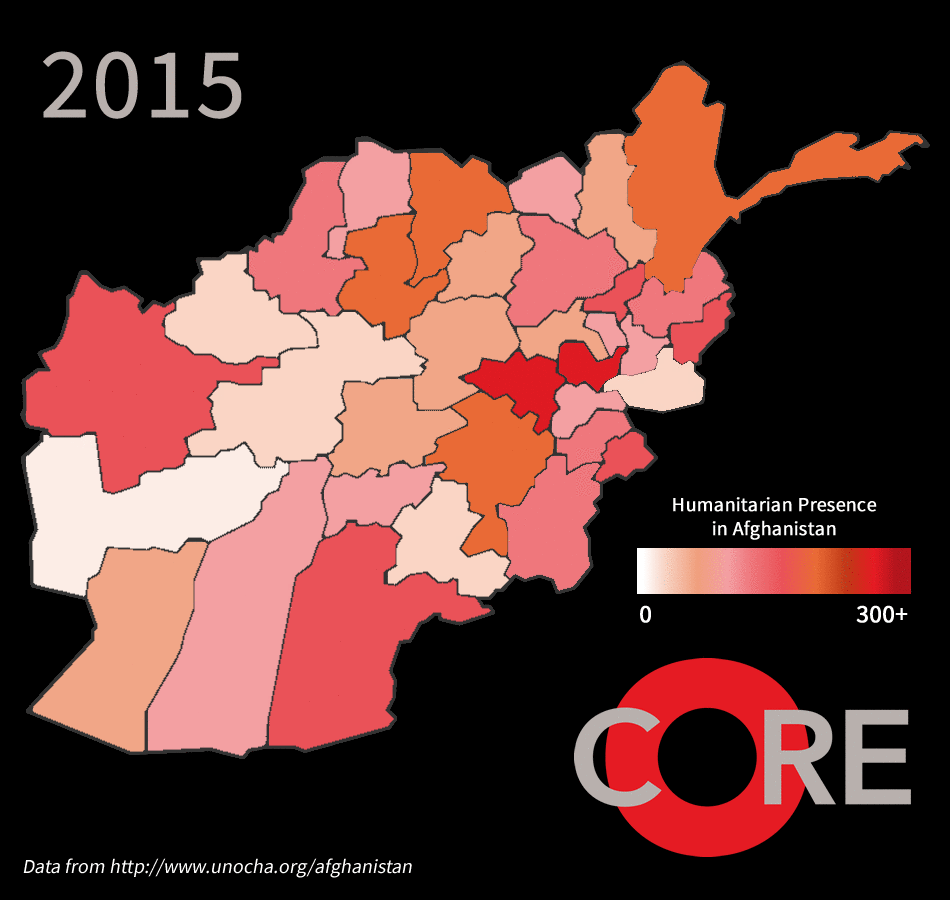Afghanistan
| CORE Programme I Haiti | Myanmar | Iraq | Ethiopia: Tigray | Afghanistan | Northeast Nigeria | Central African Republic | Global Report
Summary
Afghanistan remains in a state of chronic humanitarian crisis. Decades of unremitting armed conflict, recurrent natural disasters, and extreme poverty have placed the country near the top of the Global Crisis Severity Index, and ongoing challenges to humanitarian access have meant that coverage of humanitarian needs has been patchy, inadequate, and often skewed toward areas of lesser need where aid organisations find it safer to operate. The overall humanitarian presence in Afghanistan has been declining for many years since the peak of post-invasion international response in the early 2000s. International NGOs that once operated projects in multiple districts per province have contracted their presence over the years, and while remaining operational in the country, most have not sought to gain or regain ground for programming. Many vulnerable people across the country are unable to access resources to meet their basic needs.
Complicating the picture of humanitarian presence in Afghanistan is that a large portion of it is effectively invisible. Most NGOs in Afghanistan have dealt with insecurity risks by adopting extreme low-profile and localised modes of programming. For this reason, apart from the Afghan Red Crescent Society (ARCS) (the most present aid provider in the country), and the UN agencies, people surveyed were hard pressed to name specific organisations, local or international, that they saw as particularly effective in reaching the most vulnerable and maintaining presence. Danish Committee for Aid to Afghan Refugees (DACAAR) and the Aga Khan Development Network were the most frequently recognised—both are technically international organisations that have distinctively Afghan identities through their long presence and nationalised leadership.
SCORE Reports
Under the CORE research programme, supported by the Office of US Foreign Disaster Assistance of the United States Agency for International Development (USAID/OFDA), Humanitarian Outcomes is studying how aid is delivered in hard-to-access provinces in Afghanistan. Combined with key informant interviews of humanitarian responders and other contextual research, the survey results help identify the humanitarian providers and practices that have achieved the greatest presence and coverage in difficult environments. The Afghanistan SCORE report surveyed 450 people (51% male, 49% female) in the provinces of Baghlan, Helmand, Herat, Kandahar, and Nangahar in September 2019. A follow-up survey was conducted in January 2020 with 100 of the original respondents who had agreed to be surveyed a second time to provide more in-depth information. The research team also conducted anonymous interviews with 10 humanitarian actors in Afghanistan, including NGOs, UN agencies and the International Red Cross and Red Crescent Movement.
The humanitarian response

